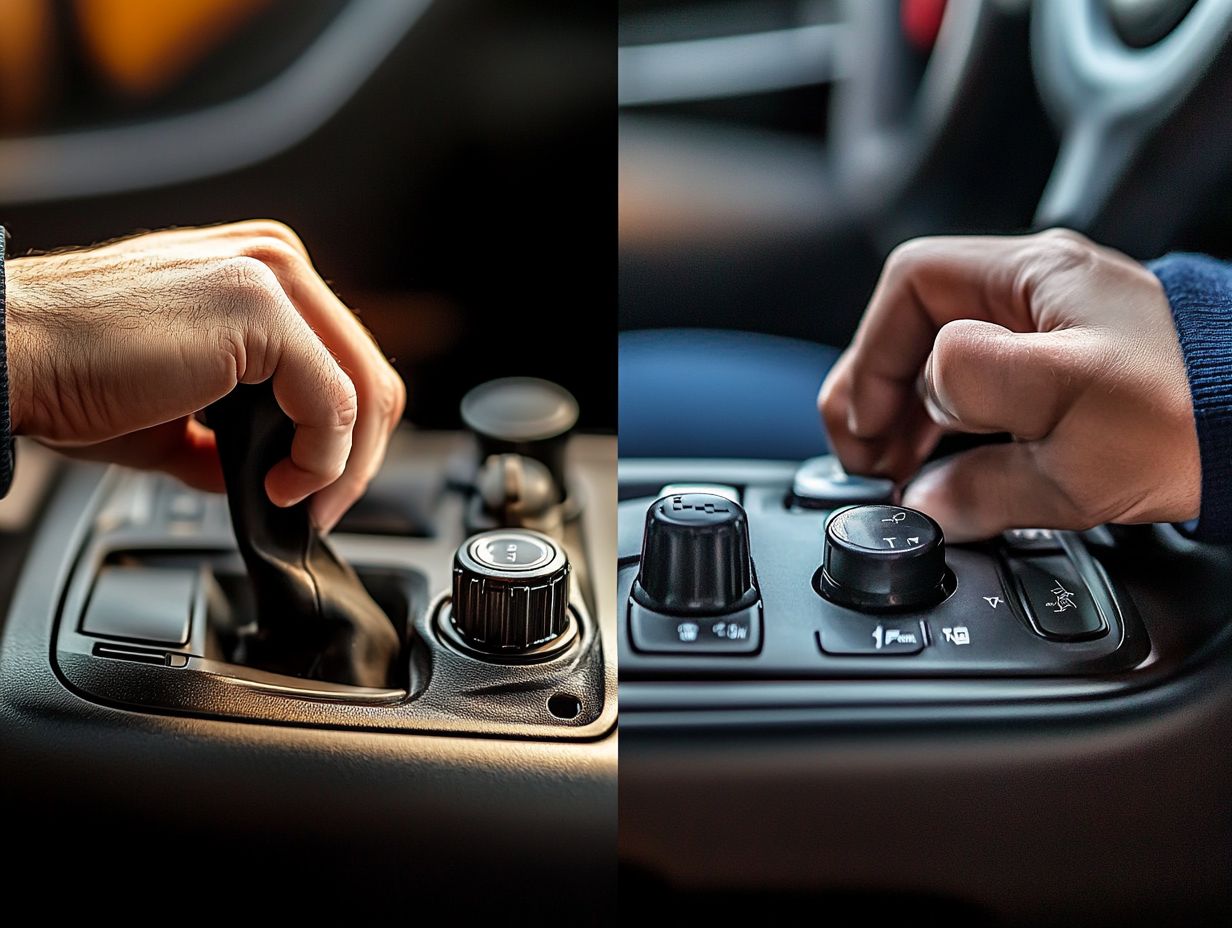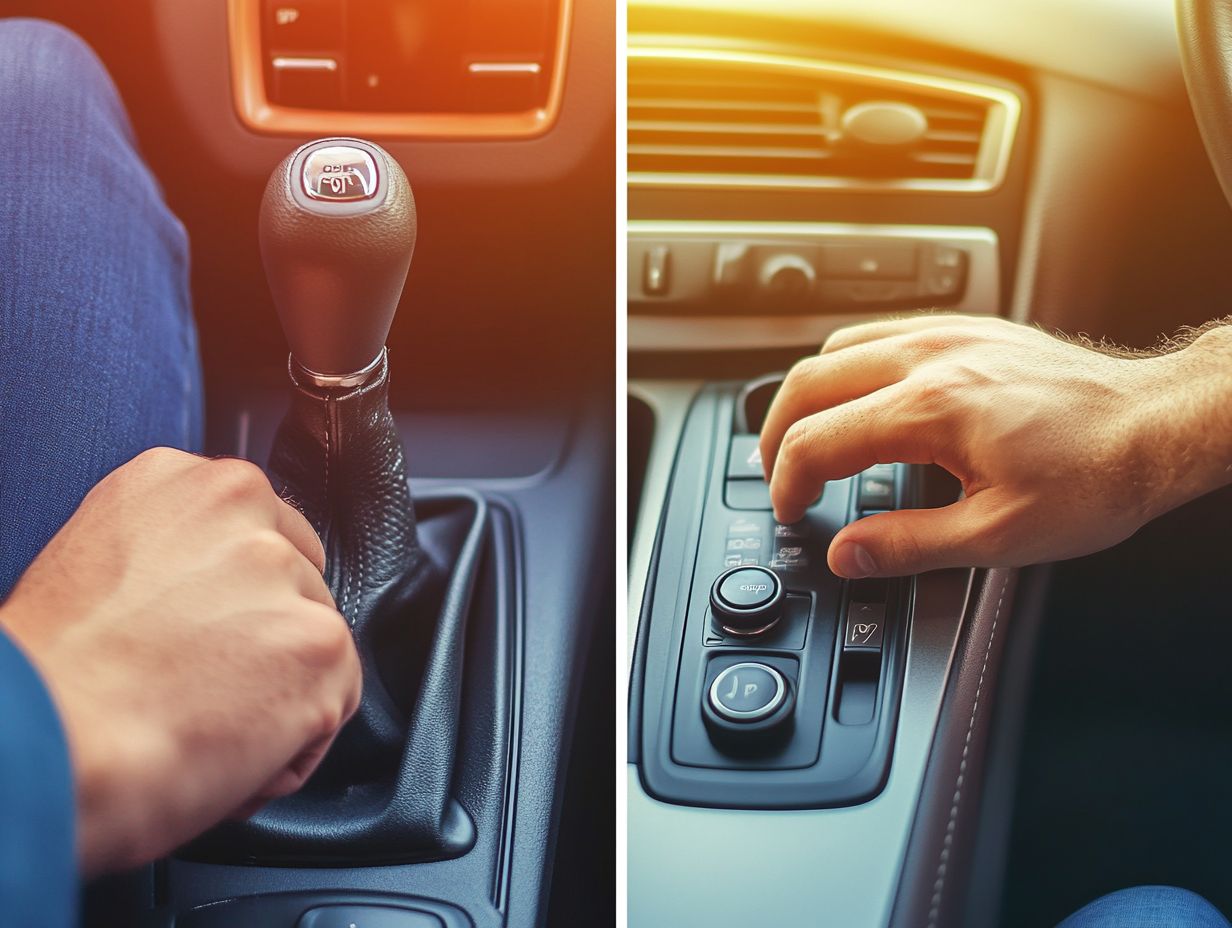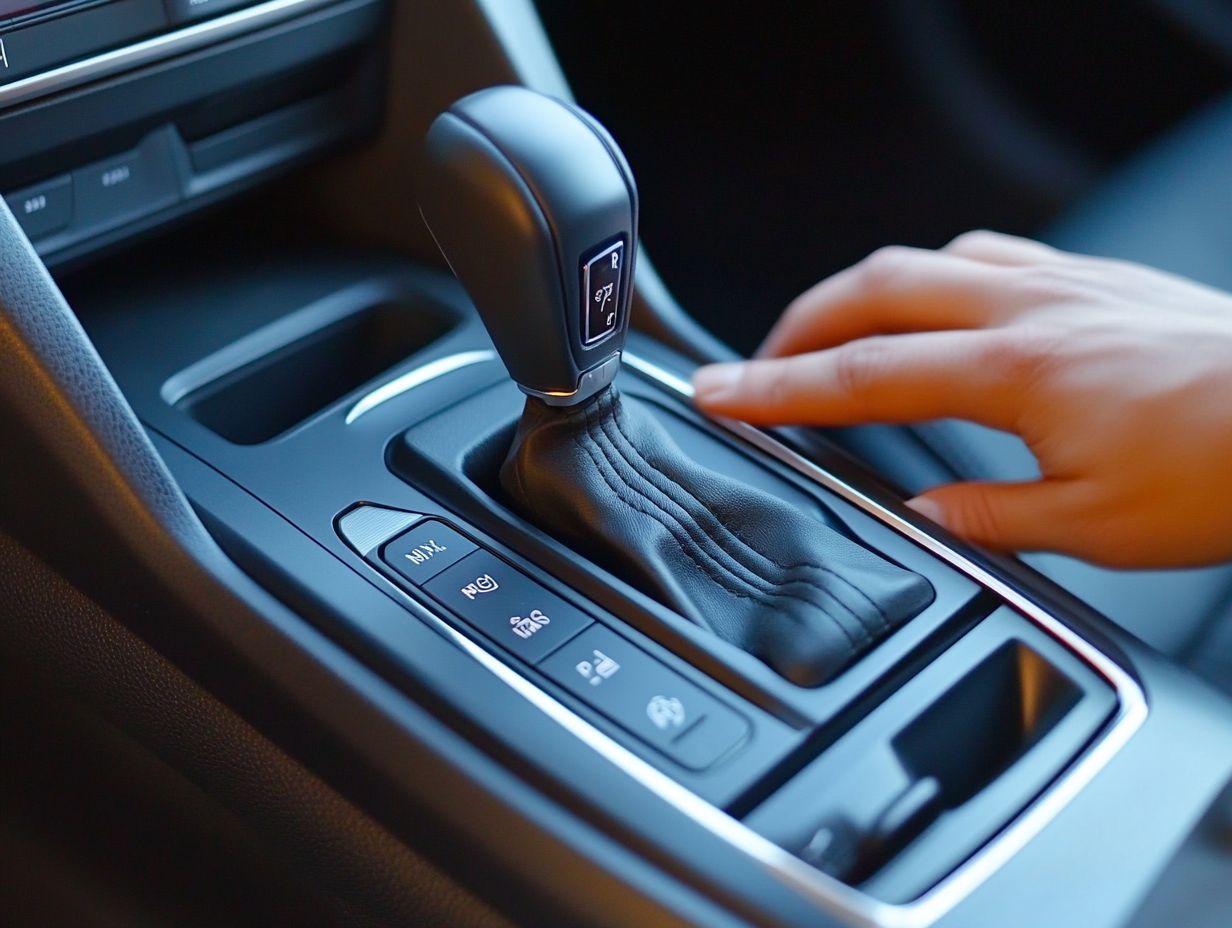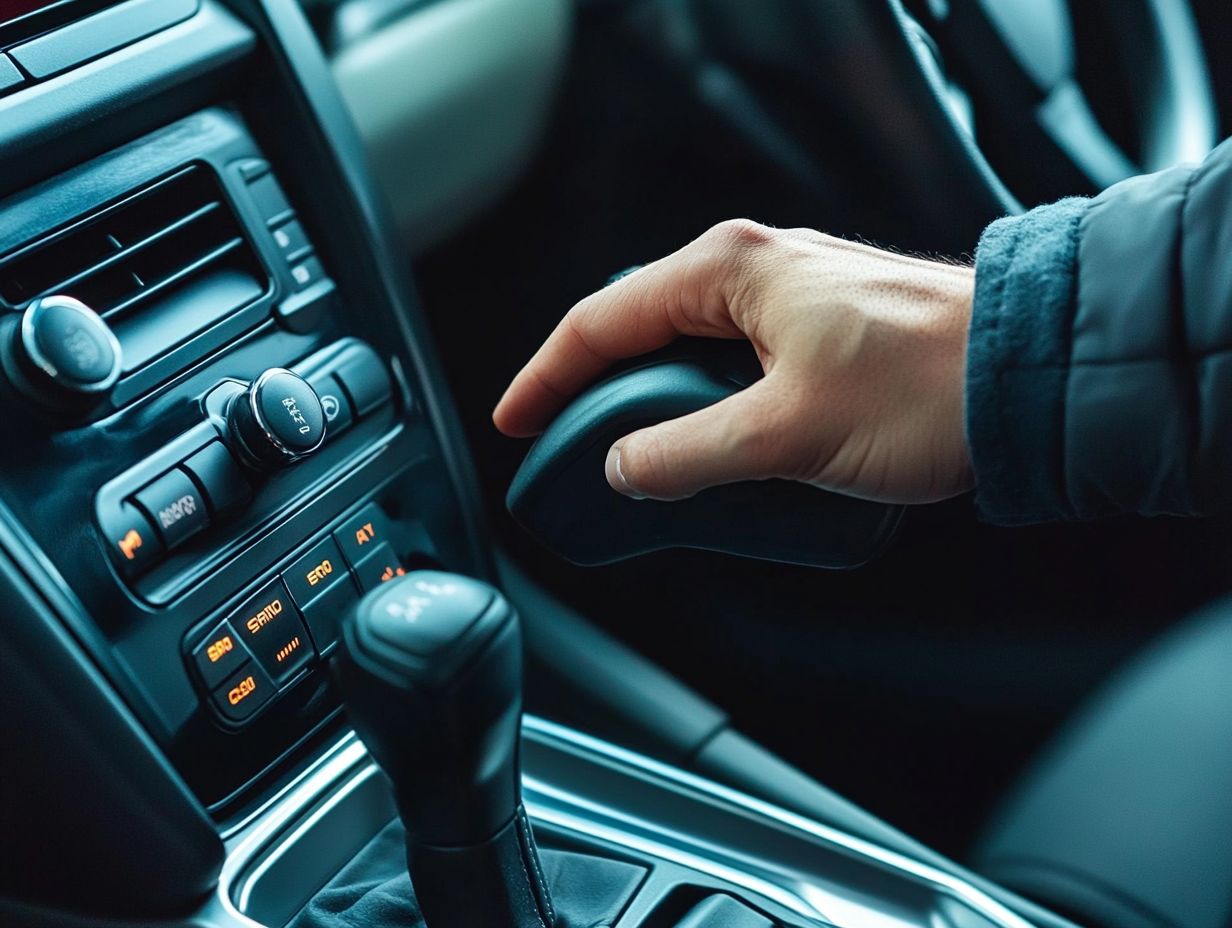Feature Analysis: Manual vs. Automatic Transmissions
Choosing between manual and automatic transmissions is a decision that can shape your entire driving experience. Each transmission type comes with its own set of advantages and disadvantages that can profoundly influence how you engage with the road.
This guide outlines the pros and cons of both manual and automatic transmissions, highlighting essential factors to consider when making your choice. It also compares key performance metrics, including acceleration, fuel efficiency, and maintenance.
Whether you re a passionate driving enthusiast or someone seeking the convenience of an automatic, this information will empower you to make an informed decision that aligns with your preferences. Make your choice wisely!
Contents
- Key Takeaways:
- Explanation of Transmission Types
- Pros and Cons of Manual Transmissions
- Pros and Cons of Automatic Transmissions
- Factors to Consider When Choosing Between Manual and Automatic
- Performance Comparison
- Frequently Asked Questions
- What is the main difference between manual and automatic transmissions?
- Which type of transmission is better for fuel efficiency?
- Do manual transmissions require more maintenance?
- Are manual transmissions more difficult to learn?
- What are the advantages of an automatic transmission?
- Can you convert a manual transmission car to an automatic transmission?
Key Takeaways:

- Manual transmissions offer better control and fuel efficiency but require more skill and effort to operate.
- Automatic transmissions provide convenience and easier handling but may have higher maintenance costs.
- Choosing between manual and automatic should consider cost, convenience, and personal preference.
Explanation of Transmission Types
Transmission types in vehicles play a crucial role in shaping performance, fuel consumption, and your overall driving experience. When considering the two primary categories, you’re essentially looking at manual and automatic transmissions.
Manual transmissions invite you to engage more actively, offering a better sense of control and a deeper connection to the car. On the other hand, automatic transmissions are praised for their convenience and user-friendliness.
Understanding these distinctions is vital for prospective buyers, mechanics, and anyone intrigued by the mtcars dataset, which sheds light on MPG distribution and maintenance costs related to various transmission types.
Pros and Cons of Manual Transmissions
Manual transmissions present a distinctive mix of benefits and drawbacks that can significantly influence your driving experience and the overall performance of your vehicle.
On one hand, they grant you better control with precise gear selection, often resulting in improved MPG and reduced maintenance costs compared to automatic transmissions.
On the flip side, they can be less convenient in heavy traffic and may take time to learn, which might dissuade some potential buyers.
Advantages and Disadvantages
The benefits of manual transmissions appeal to your desire for enhanced fuel efficiency, lower maintenance expenses, and greater control while navigating various driving conditions.
However, they do come with some drawbacks, such as requiring more engagement from you and creating challenges in heavy traffic.
The improved MPG that manual vehicles offer can significantly lower fuel costs, leading to savings over time. This is particularly appealing if you prioritize economic efficiency in your driving experience.
The simplicity of manual systems often means reduced maintenance costs, as there are fewer complex components that can fail. Operating a manual transmission requires more concentration and can become taxing in stop-and-go traffic, potentially leading to fatigue and diminishing your overall enjoyment.
Shifting gears is thrilling, but it may not fit everyone’s lifestyle preferences, especially in urban environments where convenience takes precedence.
Pros and Cons of Automatic Transmissions

Automatic transmissions have gained immense popularity, and for good reason. They offer a wealth of advantages, particularly in terms of comfort and ease of driving.
In bustling urban environments, where stop-and-go traffic reigns supreme, the convenience of an automatic transmission becomes undeniable. Advanced technologies in these systems can even help optimize gas mileage, making your drives more efficient.
Some enthusiasts might argue that automatics lack the engaging experience offered by manual transmissions. It s a balance of convenience versus connection, and the choice ultimately depends on your driving preferences.
Advantages and Disadvantages
The advantages of automatic transmissions largely center on driving comfort and ease of use, positioning them as the perfect choice for your daily commutes and urban adventures. However, you should be aware of some downsides, such as potentially higher maintenance costs and, at times, a less engaging driving experience compared to manual options.
The smooth gear changes of automatic systems elevate your overall driving experience, allowing for smooth acceleration and reducing fatigue during those long journeys. Thanks to modern technological advancements, which refer to the latest improvements in vehicle engineering, vehicles equipped with these transmissions now boast significantly improved gas mileage, making them a more economical choice in the long run.
Consider the possibility of higher repair costs as you choose your ideal vehicle! It s essential to weigh this alongside the potential sensitivity to various driving conditions, which might lessen the thrill that passionate drivers enjoy with manual gear changes. Ultimately, finding the right balance among these factors is crucial for anyone contemplating their vehicle choice.
Factors to Consider When Choosing Between Manual and Automatic
When deciding between manual and automatic transmissions, you ll encounter several crucial factors that can profoundly influence both your driving experience and the long-term costs of ownership. It s essential to weigh considerations such as cost efficiency and the convenience of daily driving.
Your personal preferences for engagement and control will also play a significant role in this decision, especially when you analyze how each option affects fuel efficiency and maintenance expenses.
Cost, Convenience, and Personal Preference
When you find yourself choosing between manual and automatic transmissions, it s essential to weigh factors such as cost, convenience, and personal preference, as these elements significantly shape your driving experience and overall satisfaction.
If you re drawn to the thrill of a more engaged driving experience, manual transmissions offer that excitement, where each gear shift becomes a deliberate part of your journey. On the other hand, if ease of use and adaptability to varying traffic conditions are more your style, automatic options are likely to catch your eye.
For those mindful of their budget, manuals often present a more appealing choice due to lower purchase prices and generally reduced maintenance costs, which can have a substantial impact on your financial landscape over time. The smooth drive of automatics makes daily commutes comfortable, requiring less physical effort and allowing you to glide through stop-and-go traffic with ease.
Ultimately, your driving experience is intricately linked to your unique inclinations, demonstrating how your lifestyle and preferences play a pivotal role in shaping your choice of transmission type.
Performance Comparison

A performance comparison between manual and automatic transmissions can unveil crucial differences in acceleration, fuel efficiency, and maintenance requirements. Exploring a detailed feature comparison: manual vs. automatic can significantly sway your buying decision.
In the hands of a skilled driver, manual transmissions often deliver quicker acceleration. Meanwhile, automatic transmissions leverage sophisticated algorithms to enhance fuel efficiency based on their model coefficients. Grasping these distinctions is vital if you’re keen on performance metrics and long-term costs.
Acceleration, Fuel Efficiency, and Maintenance
When considering acceleration, fuel efficiency, and maintenance, the differences between manual and automatic transmissions are quite pronounced. These differences are evident in their respective mpg histograms and maintenance costs.
With manual transmissions, you gain greater control over the engine s power band. This can lead to quicker acceleration. In contrast, automatic transmissions may have a slight lag. However, they come equipped with technological advancements that enhance fuel efficiency.
For instance, the ability to downshift rapidly in a manual transmission can significantly improve responsiveness during overtaking. This makes it a favored choice for performance enthusiasts.
On the flip side, modern automatics feature advanced gear-shifting technologies that optimize performance, especially in city driving scenarios. These innovations attract consumers who value driving convenience and cost-effectiveness.
Regarding maintenance costs, manuals generally have the upper hand. They typically incur lower repair expenses due to their simpler design. Automatics, while convenient, might face higher service fees over time because of their intricate components.
Frequently Asked Questions
What is the main difference between manual and automatic transmissions?
The main difference is how the car changes gears. In a manual transmission, the driver uses a clutch and gear shifter to manually change gears. In contrast, an automatic transmission lets the car’s computer control the gear-shifting process.
Which type of transmission is better for fuel efficiency?

Manual transmissions are typically more fuel-efficient than automatics. This is because they give the driver more control over shifting, which can lead to better gas mileage.
Do manual transmissions require more maintenance?
Yes, manual transmissions require more maintenance compared to automatics. They have more moving parts, such as the clutch, that need regular checks and potential replacements.
Are manual transmissions more difficult to learn?
Learning to drive a manual transmission can be more challenging than an automatic. It requires coordination between the clutch, gear shifter, and accelerator, which takes time to master.
What are the advantages of an automatic transmission?
Automatic transmissions offer fantastic benefits, like making stop-and-go traffic a breeze, ensuring smoother gear shifts, and allowing you to keep both hands on the wheel.
Can you convert a manual transmission car to an automatic transmission?
It is possible to convert a manual transmission car to an automatic, but it can be complicated and expensive. Consulting with a professional mechanic before attempting this conversion is advisable.
Have more questions? Ask us below!






